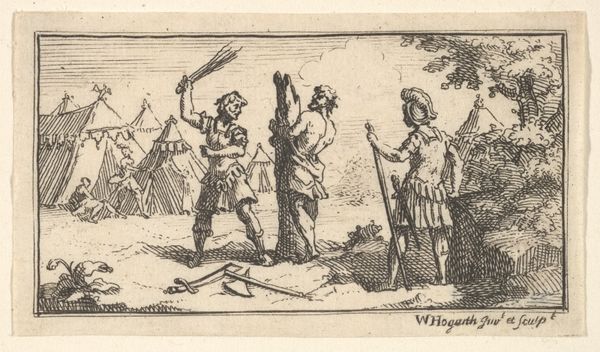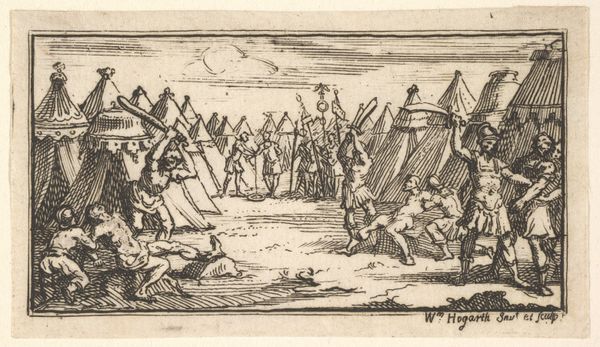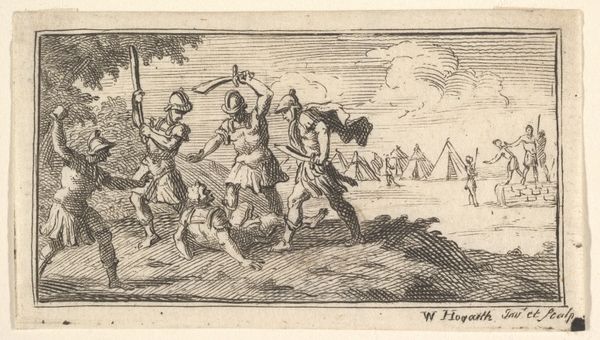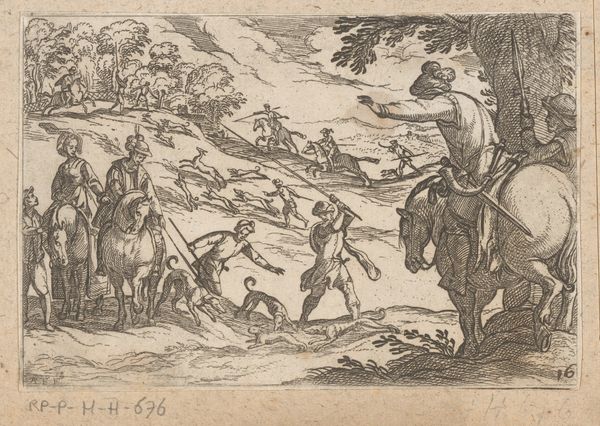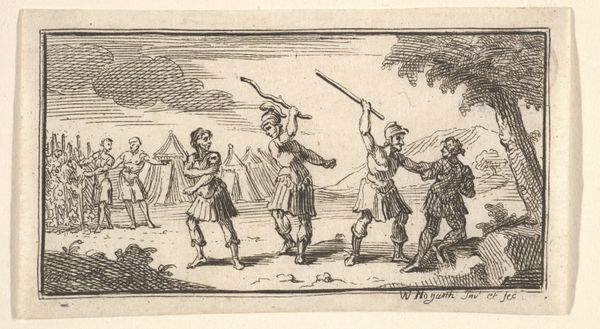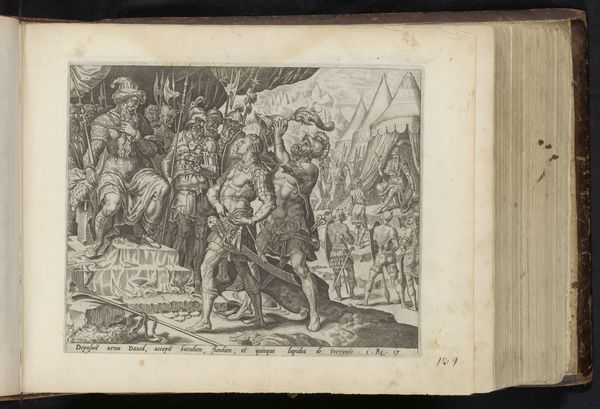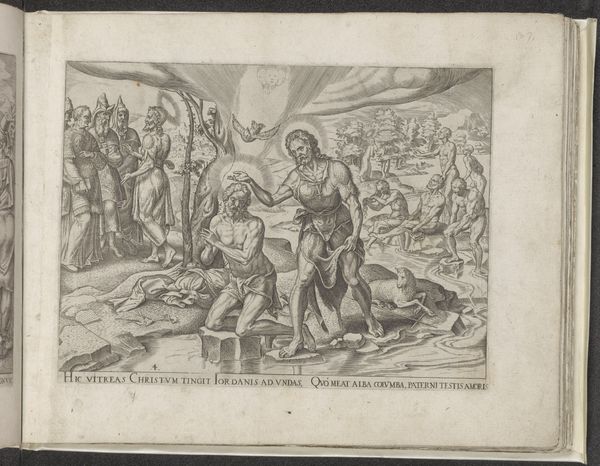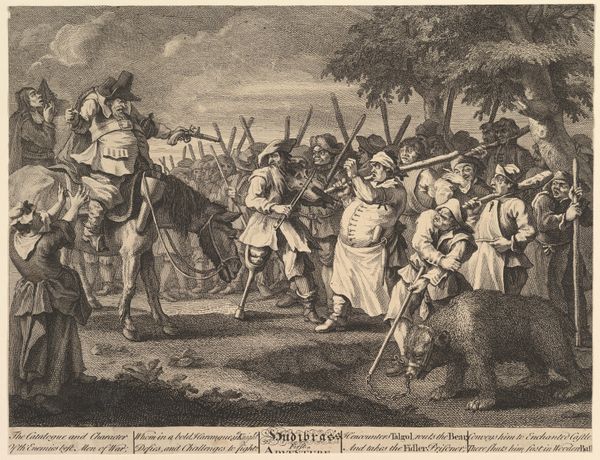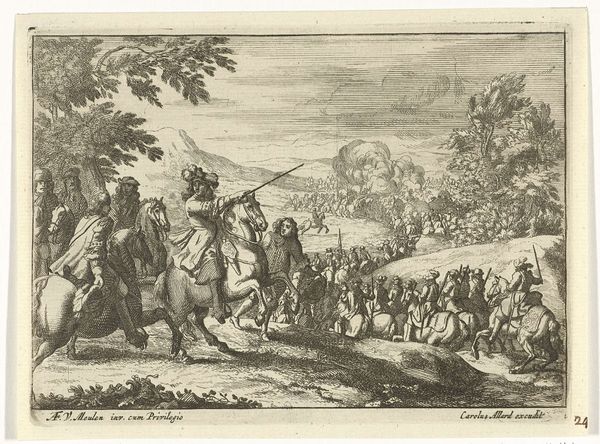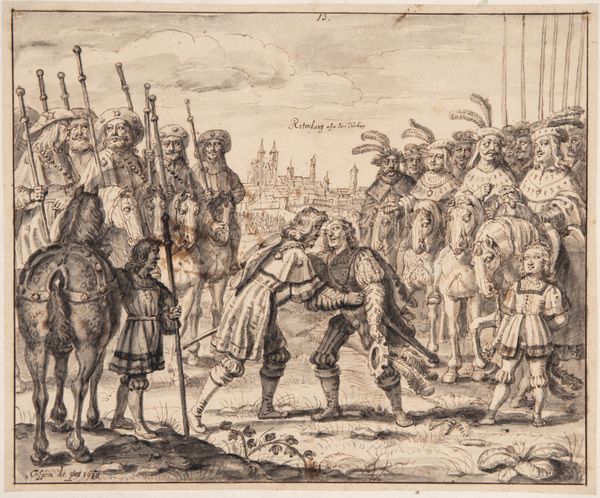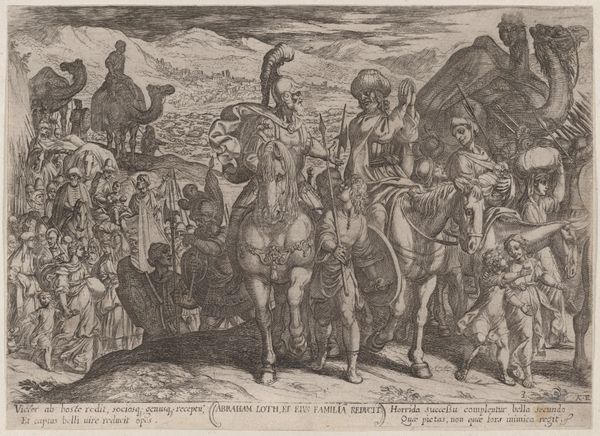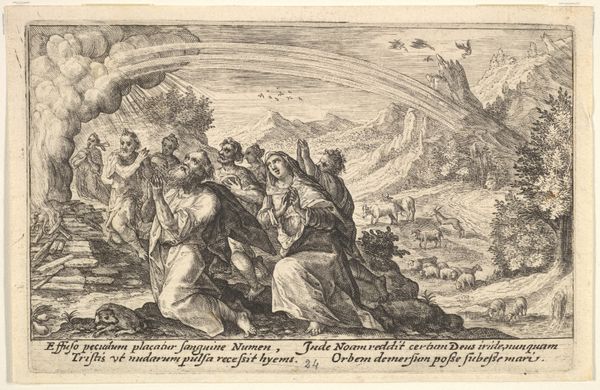
Decimation (John Beaver, Roman Military Punishments, 1725) 1725 - 1779
0:00
0:00
drawing, print, etching, engraving
#
drawing
#
ink drawing
#
baroque
# print
#
pen illustration
#
pen sketch
#
etching
#
figuration
#
pen-ink sketch
#
history-painting
#
engraving
Dimensions: sheet: 1 3/4 x 3 1/16 in. (4.4 x 7.7 cm)
Copyright: Public Domain
Editor: Here we have "Decimation (John Beaver, Roman Military Punishments, 1725)" by William Hogarth, likely made between 1725 and 1779. It’s an etching, quite small in scale, and intensely detailed. The scene depicts what I assume is the Roman military punishment of decimation. What strikes me is the visible labor of its creation, every line etched carefully into the plate. What stands out to you about this work? Curator: I’m drawn to the process as well. Consider the act of Hogarth making a print, etching, inking, pressing. He's disseminating a vision of power and its brutality to a wider audience, turning what was a localized, material process in his studio into something potentially mass-produced. Look at how the repetitive, linear strokes used to depict the figures create a sense of dehumanization. Don't you think this comment is crucial for how the military system functions, historically, as a labor force? Editor: Absolutely! The stark lines do make them seem less individual. Is that dehumanization intended to critique the Roman army or the military apparatus of Hogarth's time? Curator: The Roman subject acts as a mask, doesn't it? He could be indirectly critiquing contemporary forms of military discipline and the social hierarchy they maintain, by drawing parallels. Also, consider how printmaking itself relies on discipline. Think about the craftsman in his workshop, repeating the labor-intensive steps necessary to bring this piece into being! Editor: So, the medium itself echoes the themes being portrayed? The regimented process of creating the etching mirrors the regimented brutality of the military? That’s a perspective I hadn't considered. Curator: Precisely. Hogarth, through the labor and materiality of his printmaking, challenges us to confront the very structures of power that govern society. The physical object, circulated and consumed, becomes an agent in this critique. Editor: I’ll never look at an etching the same way again! It’s fascinating to see how deeply connected the materials and processes are to the subject matter. Thanks for your insights. Curator: And thank you for helping reveal how socially charged a common print might be. It's been enriching to delve into the labor, materials, and meaning embedded within this artwork.
Comments
No comments
Be the first to comment and join the conversation on the ultimate creative platform.
